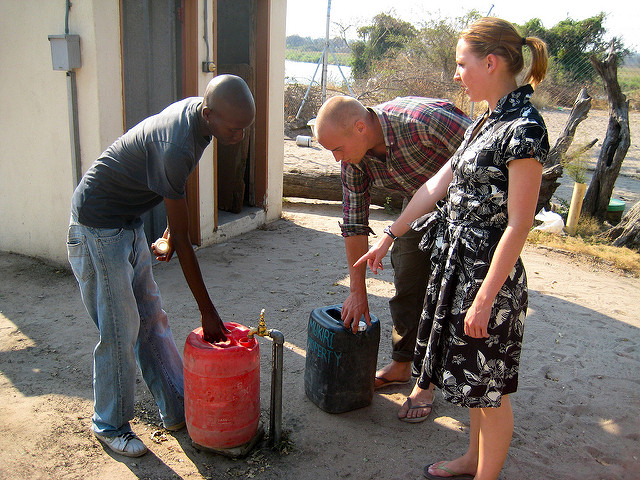Water Quality in Namibia: Misled by Bottled ‘Mineral Water’
 Namibia is a large, sparsely populated country on the south-west coast of Africa. It has enjoyed relative stability since gaining independence in 1990 after a struggle with the South African government. Unfortunately, the water quality in Namibia has been an issue for some time, with many avoiding the usage of tap water for drinking purposes and opting for bottled water instead.
Namibia is a large, sparsely populated country on the south-west coast of Africa. It has enjoyed relative stability since gaining independence in 1990 after a struggle with the South African government. Unfortunately, the water quality in Namibia has been an issue for some time, with many avoiding the usage of tap water for drinking purposes and opting for bottled water instead.
In some cities, tap water is contaminated; in others, it may be safe to drink. In cities such as Keetmanshoop and Tsumeb, it is said that all water is considered contaminated and that it is recommended to bring all tap water to a rolling boil if you wish to drink, brush your teeth or make ice cubes with it. Otherwise, it is recommended to buy capped bottled water from reputable sellers.
In cities like Swakopmund, Walvis Bay and Windhoek, the water is considered as ‘may be safe to drink’ because the water is chlorinated. This means that locals can drink water from the tap without issue. Despite this, many still choose to avoid the water due to instances of some small strains of local E. coli being present in the water. This bacteria can cause diarrhea to new visitors.
As a result of water contamination, retail chains in Namibia, such as Pick ‘n Pay, Spar and Fruit and Veg, to make significant profits selling bottled water to consumers hesitant to drink the tap water.
However, in some shops, like the Pick n’ Play in Windhoek, tap water is labeled as ‘mineral water’ and sold to the consumers unknowingly. There are very little safety measures in place to protect the consumers from being misled by the retail shops that sell bottled water in Namibia.
While explaining the water quality in Namibia and how tap water is treated in cities, Maximilian Herzog of Omaruru Beverages, a leading bottled water company in the local market, said, “nobody controls water quality at the point of use – the tap at home.” This means that from the treatment point, water can flow kilometers through unclean and old pipelines. Water remains one of the most difficult products to bottle and transport through pipelines due to accidental contamination issues. Furthermore, high chlorine levels and unbalanced mineral contents in tap water lead to unpleasant tastes.
Herzog maintains that it is important that the consumer is clearly informed with appropriate labeling and packaging on what they intend to buy, whether it be mineral water or purified water.
In order for this issue to be addressed, it is imperative for the National Standards Institute (NSI) to create regulations for bottled water sales. This will ensure that consumers are no longer misled or in danger of drinking contaminated tap water. Until then, be aware of the water quality in Namibia.
– Drew Fox
Photo: Flickr
